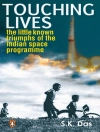This book focuses on the human aspects of wearable technologies and game design, which are often neglected. It shows how user centered practices can optimize wearable experience, thus improving user acceptance, satisfaction and engagement towards novel wearable gadgets. It describes both research and best practices in the applications of human factors and ergonomics to sensors, wearable technologies and game design innovations, as well as results obtained upon integration of the wearability principles identified by various researchers for aesthetics, affordance, comfort, contextual-awareness, customization, ease of use, ergonomy, intuitiveness, obtrusiveness, information overload, privacy, reliability, responsiveness, satisfaction, subtlety, user friendliness and wearability. The book is based on the AHFE 2017 Conferences on Human Factors and Wearable Technologies and AHFE 2017 Conferences on Human Factors and Game Design, held on July 17-21, 2017, in Los Angeles, California, USA, and addresses professionals, researchers, and students dealing with the human aspects of wearable, smart and/or interactive technologies and game design research.
Table of Content
A wearable flexible sensor network platform for the analysis of different sport movements.- Emotion recognition using physiological signals: Laboratory vs. wearable sensors.- A wearable device supporting multiple touch- and gesture-based languages for the deaf-blind.- A step in the right direction – privacy concerns and perceived sensitivity of fitness trackers.- Development of customized orthotics based on lower-leg anthropometric data and task.- An intelligent pen to assess anxiety levels through pressure sensors and fuzzy logic.- Real-time eye-interaction system developed with eye tracking glasses and motion capture.- Accuracy and efficiency validation of a helmet mounted vibrotactile feedback system for aerodynamic head position during cycling.- The pressure comfort sensation of female’s body parts caused by compression garment.- Wearability and user experience through user engagement: The case study of a wearable plurisensorial device.- The implementation of acoustic in the game design-insight from the recently ‘onmyoji’ phenomenon in China.- Game design for students: Teaching as a whole context.- Gaming as a driver for social behavior change for sustainability.












